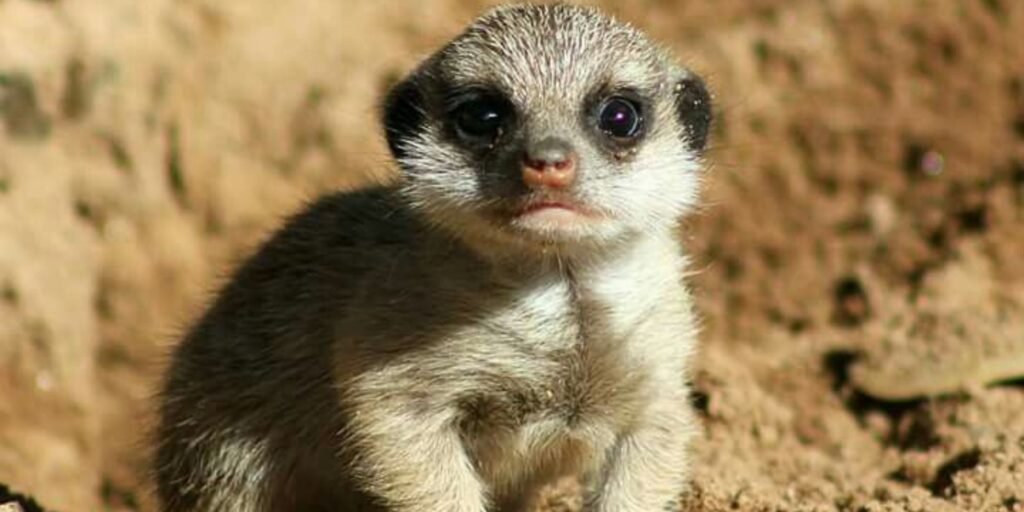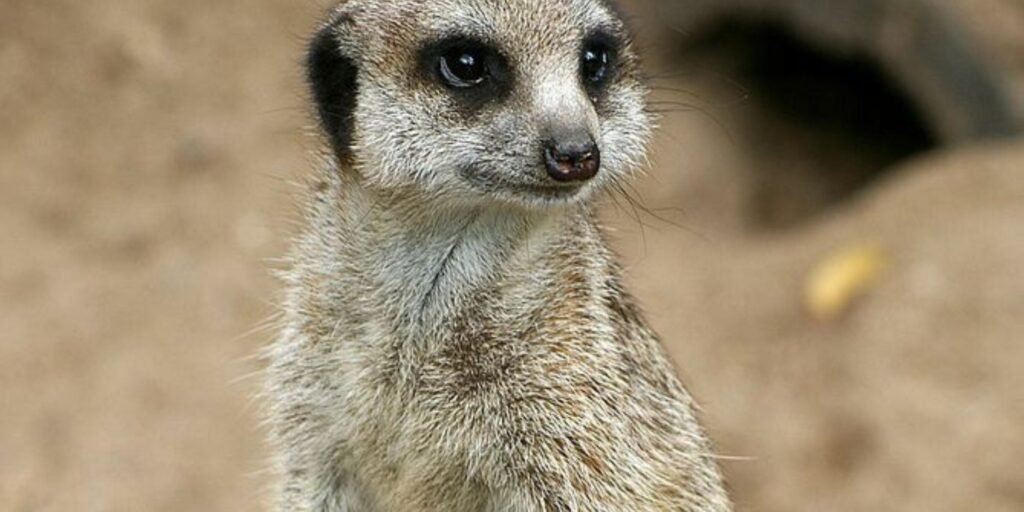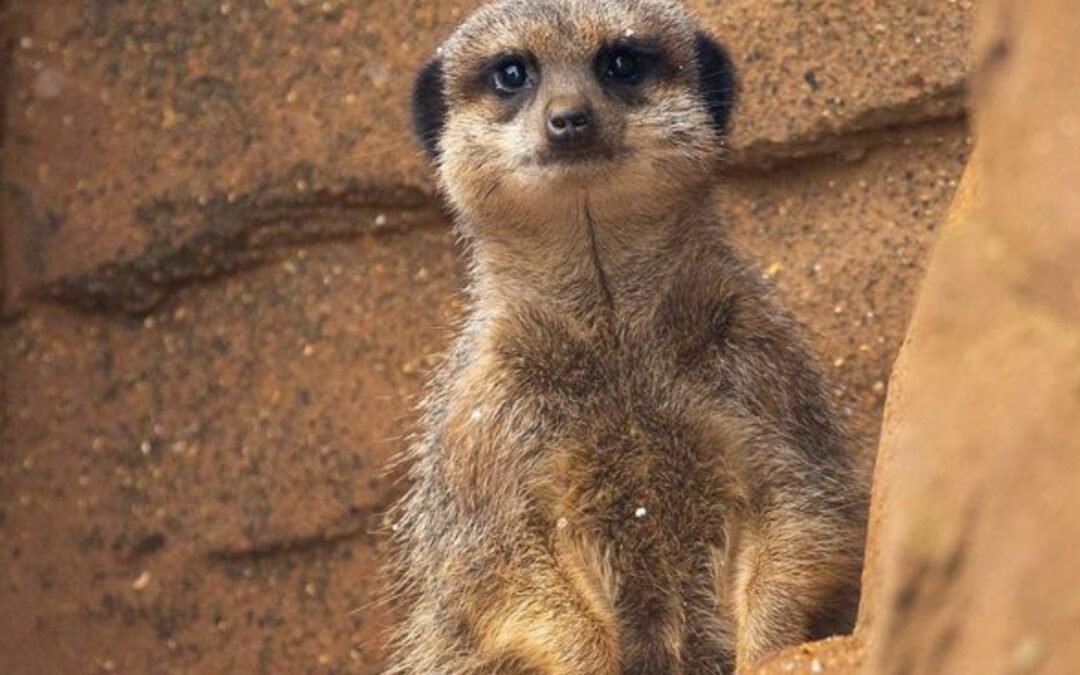Meerkats, with their upright posture, curious eyes, and social behaviors, are undeniably fascinating creatures that capture our attention. Native to the deserts of Southern Africa, these small members of the mongoose family are renowned for their tight-knit social groups and highly coordinated survival strategies. However, one question that frequently arises is: Are meerkats friendly to humans?
In this article, we will delve into meerkats’ behavior, their interactions with humans, and the factors that influence their tendency to be friendly or not.
Meerkat Behavior: A Snapshot
Meerkats (Suricata suricatta) are highly social animals that thrive in groups, known as mobs or clans. These groups can range from a handful to as many as 50 individuals. They live in underground burrows, which they dig to escape predators and regulate their body temperature in the harsh desert environment. A typical meerkat group has a dominant pair that leads the group, while other members contribute to the group’s welfare through various roles such as foraging, guarding, and babysitting.
Meerkats are renowned for their cooperative behavior. They often stand upright on their hind legs, scanning the environment for threats while others forage or care for the young. This behavior, although endearing, serves a crucial survival purpose. These animals have an intricate communication system, using a range of vocalizations and gestures to maintain group cohesion and warn of approaching predators.
Despite their social nature, it is important to recognize that meerkats are wild animals, and their instinctive behaviors are geared toward survival in their natural habitat. While they are undoubtedly social with their kind, their interactions with humans can vary considerably based on the situation.
Are Meerkats Naturally Friendly Toward Humans?

In their natural environment, meerkats are not particularly friendly toward humans. They are highly cautious and alert to potential threats, and humans often fall into the category of a perceived danger. Meerkats have evolved to be wary of larger animals, including humans, because of the natural threats posed by predators such as eagles, jackals, and snakes. This cautiousness is an adaptive survival mechanism that has helped them avoid becoming prey.
Meerkats rely on their finely tuned senses to detect danger. They have excellent eyesight, and they are highly attuned to subtle movements in their environment. When they spot something unfamiliar, such as a human, their first instinct is often to retreat into their burrows or seek higher ground to get a better view. This wariness is not a sign of aggression but rather a protective behavior that keeps them safe from harm.
Meerkats in the Wild: Avoiding Human Interaction
In the wild, meerkats tend to avoid human interaction at all costs. Their interactions with people are generally limited to moments of chance encounters in their natural habitat. For instance, if a human happens upon a meerkat colony, the meerkats may freeze in place or run for cover, relying on their agility and underground burrows for protection.
Their avoidance of humans is not rooted in hostility but in self-preservation. Meerkats are naturally wary of larger creatures and do not engage with unfamiliar animals unless it is necessary. Unlike domesticated animals that have become accustomed to human presence, wild meerkats view humans as potential threats and maintain a healthy distance.
Wild meerkats are incredibly sensitive to disturbances in their environment. Any human presence can send them into alert mode, signaling to other members of the group to be on the lookout for danger. This heightened sensitivity is an essential part of their survival, as it helps them stay one step ahead of predators.
Meerkats Raised in Captivity: A Different Experience
While wild meerkats tend to be fearful of humans, the situation is often different for meerkats who are raised in captivity. Captive meerkats, particularly those born in zoos or wildlife sanctuaries, are more likely to interact with humans. Still, this behavior is a result of their exposure to people from an early age.
In controlled environments, meerkats may become accustomed to the presence of humans. They may display curiosity and approach people, especially if they associate humans with food or care. However, it is essential to note that even in these situations, meerkats retain their wild instincts. Their interactions with humans may be more neutral or exploratory rather than overtly friendly.
In some cases, captive meerkats have been trained to perform behaviors for educational purposes, and this can create the illusion of a “friendlier” meerkat. Yet, this friendliness is often based on a learned association rather than an inherent desire to form a bond with humans.
Why Meerkats Are Not Domesticated Animals

Unlike dogs, which humans domesticated thousands of years ago by selectively breeding for traits like loyalty and affection, meerkats have not gone through this process. Domestication involves breeding animals over many generations to develop traits suited for living with humans. As a result, domesticated animals like dogs and cats have evolved behaviors that make them sociable and approachable.
Meerkats are wild animals that live in complex social groups. They depend on their instincts for survival, which makes it difficult for them to form lasting bonds with humans. While meerkats cooperate within their packs, their behavior does not lend itself to domestication. To survive, they must remain cautious and wary of predators.
Though some captive meerkats may show curiosity or tolerance toward humans, this behavior does not indicate domestication. Their friendliness often results from external factors like the need for food or shelter, not from a true desire for companionship with humans.
Meerkats and Human Interaction in Zoos and Sanctuaries
In zoos and sanctuaries, meerkats live in enclosures designed to mimic their natural habitats. Visitors can observe their fascinating social behaviors, such as cooperative hunting, grooming, and lookout duty. Although meerkats may get used to humans being nearby, they do not form emotional bonds with people.
Sometimes, meerkats will approach the edges of their enclosures, showing curiosity toward visitors. However, this is a one-way interaction. While they may tolerate human presence, their attention remains focused on their own group’s needs and activities.
However, it is crucial to respect the meerkats’ boundaries. Overexposure to humans or improper handling can stress the meerkats, disrupting their natural instincts and overall well-being.
Can Meerkats Be Friendly to Humans in the Future?
It is unlikely that meerkats will ever become domesticated or form deep friendships with humans like dogs. While some meerkats may show curiosity or tolerance, their wild nature and survival instincts are far different from those of domesticated pets. Meerkats thrive in social groups, and their interactions with humans are unlikely to evolve into meaningful bonds.
However, in controlled environments such as zoos or wildlife sanctuaries, meerkats can interact positively with humans. When humans approach them respectfully and carefully, meerkats can coexist peacefully, benefiting both parties.
Are meerkats friendly to humans? :Conclusion

Meerkats belong to the wild, where their social structures and survival instincts guide their behavior. These instincts make them cautious and reserved, especially around humans. While they may approach humans with curiosity in controlled settings, they will always retain their wild nature and independence. Their focus remains on the needs of their group, and their survival depends on remaining vigilant.
We must respect their wild instincts and appreciate the unique traits that make meerkats fascinating. When humans interact with meerkats, they should understand that the animals are not seeking companionship. Instead, they are reacting to their environment, often out of curiosity or the need for safety. Instead of trying to domesticate meerkats, we should observe them from a distance and appreciate their behavior for what it is.
By providing meerkats with a safe and natural environment, we allow them to thrive while maintaining their independence. Positive interactions between humans and meerkats can occur, but they must always be respectful of the animals’ space and wild nature. When we treat meerkats as wild creatures, we ensure that both they and humans can coexist harmoniously without disrupting their natural behavior.

